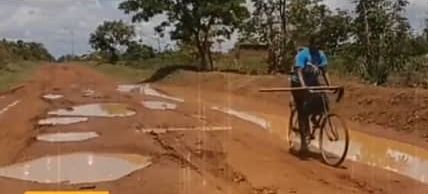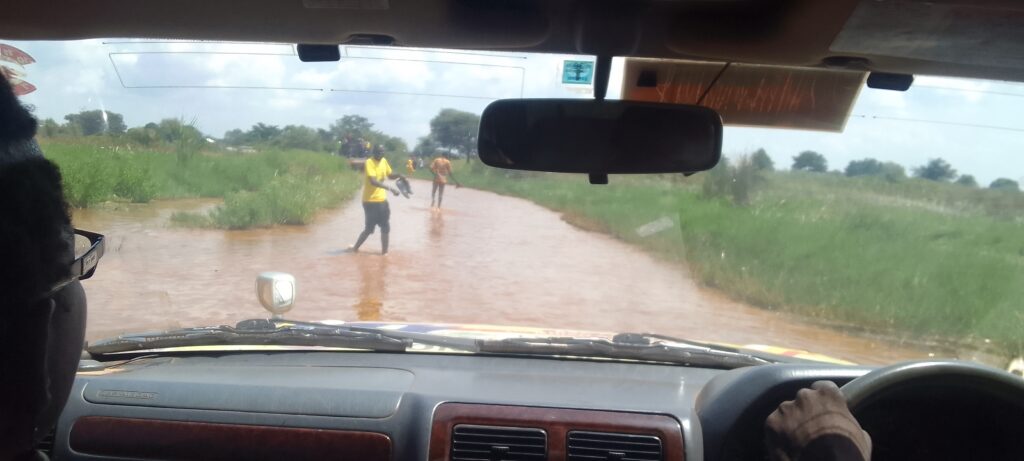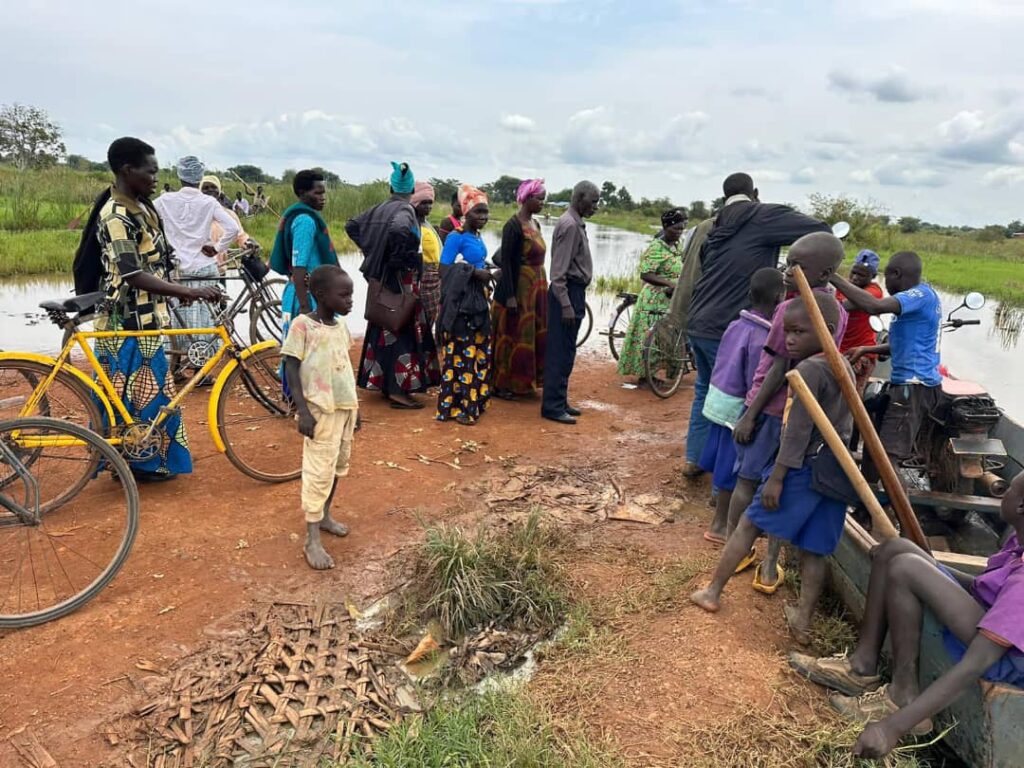
 Hot FM
Hot FM

 Hot FM
Hot FM
4 July 2025, 5:19 pm

By Sarah Ejang
In the heart of Amolatar District, the residents of Awidakowil village in Agikdak sub county, northern Uganda, are voicing their frustration over the poor condition of the Tangala–Awidakowil road.
Despite a significant allocation of 1 billion Ugandan shillings set aside for road maintenance across Uganda, local leaders have yet to effectively address the deteriorating state of this vital thoroughfare.
The State Minister for Works, Musa Ecweru, revealed earlier that the 2023/2024 roads budget was primarily intended to focus on maintenance, following the President’s directive.

Those most affected are members of the local business community, including Imat Grace Obong, who is among them. She laments the challenges faced by herself and fellow entrepreneurs:
“As business people, we rely heavily on our roads for access to the markets. The Tangala–Awidakowil road has become increasingly narrow and impassable,” she said, appealing for support from well-wishers and local authorities alike.
Livestock farmers, such as Icaya Denish, have not been spared either.
They too are feeling the pinch of the poor state of the roads. “We can’t even access the market with our animals due to the terrible condition of the road. It has become too expensive to keep repairing our motorbikes every time we navigate the flooded sections,” he explained, highlighting the economic toll the neglected road has had on their livelihoods.
Denish Odur, a local resident, emphasised the longer journeys now required to reach essential services, and urged the local leadership to take immediate action as a way of accounting for the large sum of money allocated. “The distance we travel just to access basic services is unacceptable. We need solutions,” he insisted, echoing the sentiments of many who feel trapped by the inadequate infrastructure.
Grace Auma, who operates a cassava flour business, shared her own struggles related to the road conditions. “I have lost business because I often get stuck in the water. This situation is not sustainable,” she remarked, illustrating how the crumbling road not only hinders access but also directly impacts local livelihoods.
Richard Okori Omoo, a Person with a Disability (PWD), voiced further concerns, stating that accessing places of worship and burial sites has become perilous. “These roads have turned into no-go zones, affecting our community’s ability to gather for important occasions,” he noted, underscoring the social ramifications of the region’s infrastructure challenges.
Similar sentiments are shared by Ketty Etap, a female councillor representing Persons with Disabilities (PWDs) at the district level.
She stated that she has repeatedly raised the issue of poor roads, which severely hinder access to essential social services such as hospitals, schools, and community gatherings for individuals with disabilities.
She noted that the situation is further worsened by heavy rainfall, which frequently causes flooding across Amolatar District.

When approached for a comment, Paul Samuel Mbiiwa, the district’s Chief Administrative Officer (CAO), referred inquiries to Andrew Ogwang, the District Information Officer.
Pressed for answers, Mr Ogwang provided a breakdown of how the Shs 1 billion fund was utilised during the last financial year, clarifying that the district received 99.8 million shillings for routine maintenance, and that works on many roads remain ongoing.
He assured residents that road improvement efforts remain a priority, announcing that 450 million shillings has been allocated for the 2024/2025 financial year to address seven community roads.
Mr Ogwang further revealed that a total of 850 million shillings has been earmarked for maintaining 62 kilometres of road in the upcoming budget. He acknowledged that heavy rainfall has hindered progress in many areas, particularly those affected by flooding.
Additionally, natural obstacles—such as swamps along the Otiti–Otira route, Nalubwoyo, and Muchora—are receiving special attention in order to maintain connectivity for communities cut off by flooding.
As the 2025/2026 fiscal year begins, the district plans to carry out maintenance works on 78.7 kilometres of road network, with a further 850 million shillings allocated, alongside plans to develop 2.5 kilometres of road at a cost of 450 million shillings under the Road Transport Infrastructure Plan.
In response to the community’s complaints, Mr Ogwang appealed for patience as the necessary works continue, assuring residents of the district’s commitment to improving road conditions despite ongoing weather-related challenges.
As the residents of Agikdak continue to advocate for improved infrastructure, hope remains that elected leaders will heed their calls for timely action and effective solutions. It is also important to note that Amolatar District is among five districts in the Lango sub-region severely affected by flooding, with key roads such as Namasale via Acii, Anoga to Namasale, and Acii to Etam at Wiawora Swamp currently compromised.
In response to these challenges, residents have resorted to using canoes to navigate the inundated areas — a stark reflection of the dire state of their transport infrastructure.
This story was produced with financial support from the Finnish Foundation for Media and Development (VIKES), in partnership with the Uganda Media Women’s Association (UMWA).